Joyride: The Lost Rad Ripper Board Review
The Roman candle of surf crafts.
They say Rome wasn’t built in a day, but I recently learned that a surfboard can be.
This Joyride board test, featuring …Lost’s new 80’s style pocket rocket, the RAD Ripper, had been scheduled more than a month in advance, but after Matt ‘Mayhem’ Biolos shaped me a 5’3 shooter that failed to meet his quality control standards, followed by him hopping on a plane to Australia, the board was all but forgotten.
Jump ahead one month, and I’m scheduled to pick up my RAD Ripper in three days. I decide to send Matt a courtesy email, just to make sure everything’s on track. He replies with something along the lines of, “Whoops, everything not on track!”
Uh oh.
“I’ve only got a small window to film,” I said. “Is there a stock board that would work?”
Matt explained (in gentler terms) that because my height and weight are that of an average fifth grader, there was no suitable stock option available. It had to be custom.
“I’m in Australia right now,” Matt continued, “but let me see what my team can do. They’re pretty good.”
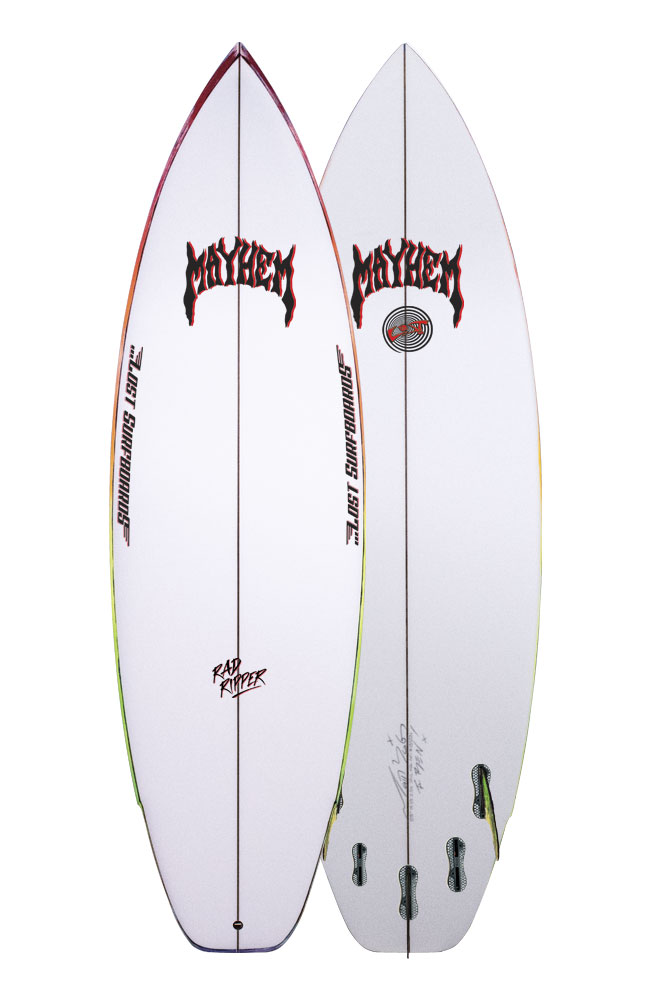
Oh she’s pretty.
Photography
Lost
Two days later I rolled up to …Lost Surfboards’ factory, which sits way up high in the San Clemente’s industrial playground. Inside was a man named Ben, who told me to pick out a tail pad from their traction closet. By the time I’d returned there was a sparkling white, foam-dust-covered, resin-reeking 5’2-and-a-half RAD Ripper with my name on it.
Square rails, flat deck, slight beak in the nose, and a not-so-subtle tail hip – these are the defining characteristics of Mayhem’s post-modern slider, which he defines as being “scaled for small, sub-par, everyday surfing.”
The under-the-arm test felt good, but then I never know how I’m supposed to discern a board’s quality from that ancient practice. Is anybody with me on that? Like, are the pros pulling a hilarious long-con on us all, or is there actually knowledge to be gleaned from vigorously flapping a board beneath our wing?
Anyways, the point is that I was enchanted by the RAD Ripper and wanted to ride it right fucking then. There were still a few hours of light left, so I thought about rushing down to the SC pier and bashing a few before sunset.
“Mmm, you might not wanna do that,” said Ben, whose cautious name aligned with his proposal. “That thing was glassed yesterday, so it’s gonna be really sensitive if you surf it right now.”
So I gingerly pushed my finger into the glass, testing the legitimacy of Ben’s claims. It felt like I’d stuck my thumb straight into one of those styrofoam coolers (the ones that Igloo is doing their damndest to eliminate). There wasn’t even any cracking – the fiberglass just… bent.
“Ok, you win,” I submitted to cautious Ben, before promising to surf it the next day.
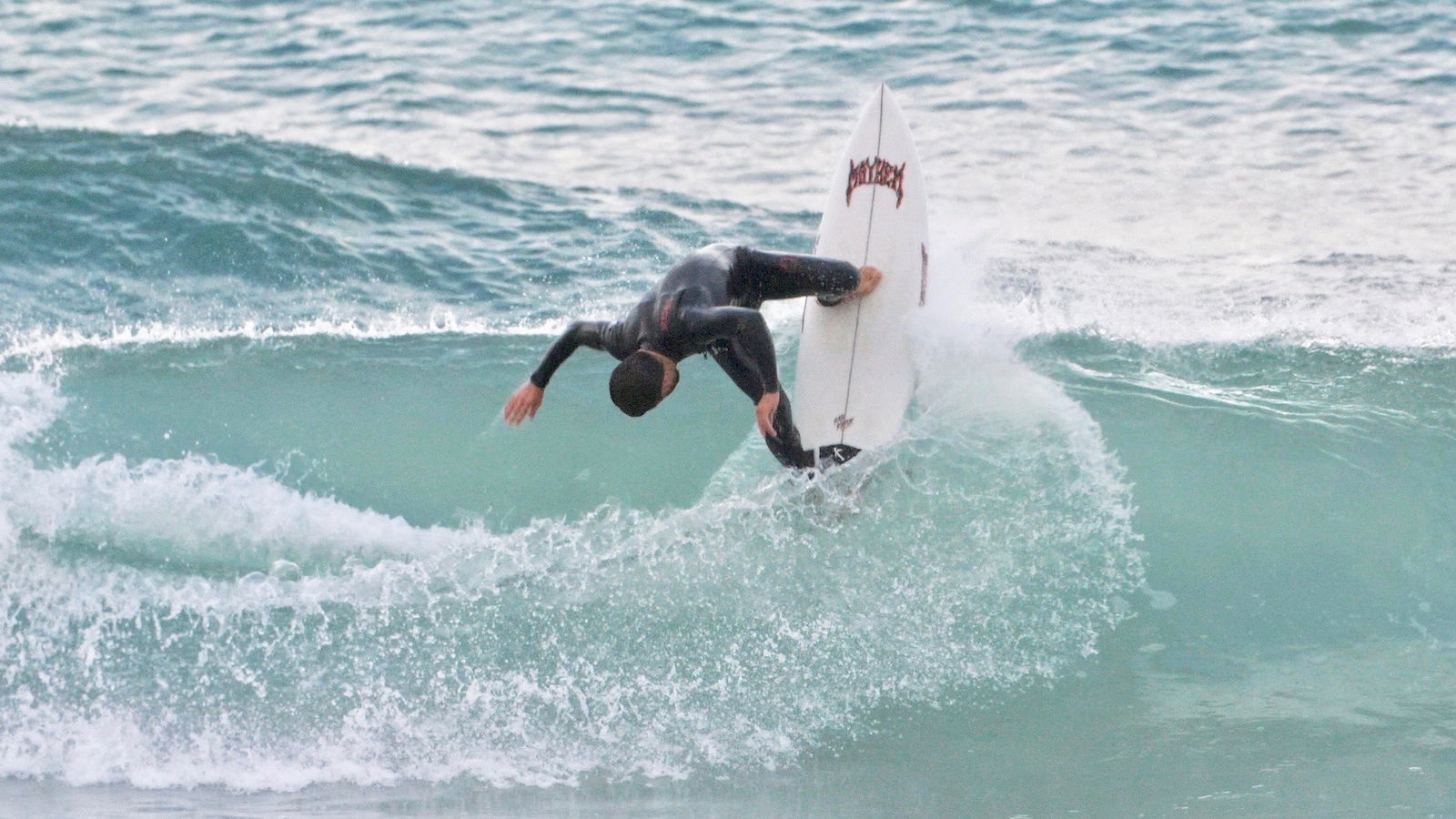
Never too early for an almost-nooner.
Overnight the waves came up, with a short period windswell pushing chest-to-maybe-head-high surf into exposed beach breaks. The night before I’d performed the classic surfer’s equation, measuring swell angle x size x period x tide / wind, all of which pointed to a historic Orange County beach break, known for its large hill and peaky wedges.
The conditions weren’t great but they suited an amateur board test, especially on a craft that’s designed for average surf. Standing nearly three inches below my personal height, the RAD Ripper felt small when paddling, but the extra foam in its belly aided flotation and its flat, beaked nose plowed through any surface texture or wind.
On my first wave, the board felt instantly slippery – not loose per se, just kind of S-ey in its movements, like it had been shot from a Roman candle. I enjoyed this feeling but found it somewhat difficult to control.
You’re probably wondering if the board was fast. There’s no straight answer to that question.
The best way I can describe the board’s relationship to speed is that it has inertia. The RAD Ripper needs a little help to get going, but once it does, Newton’s first law applies. I wouldn’t call it a ‘fast’ board compared to others that I’ve ridden (especially epoxies), but the RAD Ripper’s flat rocker and wide tail certainly aid its propulsion.
I also found myself able to turn very tight in the pocket on this board, especially on my forehand, which is a feeling I’m not accustomed to. Generally I’d describe my surfing as round, or perhaps even square, but never tight or acute – akin to Adriano de Souza rather than Kolohe Andino.
The RAD Ripper put me somewhere in the middle of those two, maybe like Tomas Hermes.
On smaller waves, the RAD Ripper had a tendency to stick and bog, so I wouldn’t call it a groveler. On the biggest waves (head-high), it held off the bottom – probably thanks to that hip in the tail – but had a tendency to slide off the top. As someone who likes to feel totally in-control on turns, this posed an issue.
Thanks to our friends at Futures, it was an easy fix.
Let’s talk about fins
My first session on the RAD Ripper was anchored by Futures’ P6 Legacy fins. The Legacy series is a brand new line from the Futures crew, designed to make fins easier to understand for the wider surfing public.
An admission:
Before starting the Joyride, I had no real concept of what terms like ‘rake’ and ‘foil’ actually meant, nor how they affected a fin’s performance. Keep in mind, I’ve been surfing for over 20 years and following it quite seriously for 12-15, and these core fin concepts still escaped my grasp.
And it’s not because they’re difficult, I was just too indifferent about fins to take the time to learn.
I tell you this because 1. I can’t be the only experienced surfer who has lived in this cloud of ignorance and 2. After learning just a few fin tips from the team at Futures, I’ve had way less confusion about why a board feels a certain way, and what I can do to change it – all of which equates to more frequently good sessions. There’s no reason you shouldn’t reap the same benefits.
So let me break down three key features of every fin as simply as possible:
- Construction/flex: What material a fin is made from. Each fin construction sits on a relative spectrum of stiffness, which determines how much flex your fin has. More flex equates to more speed generation and “whip” but less control.
- Foil: The curvature on the inside face of the side fins. A concave foil helps to create lift and speed while a flat foil sits down in the water and maintains control.
- Rake: How far the tip of the fin extends beyond the base. More rake equals longer, arcing turns while less rake leads to pivot-based maneuvers.
Of these three major fin characteristics, rake is the only one that changes across Futures’ new Legacy series. All three sets in the line – the P6, F6, and R6 – are made from Future’s Honeycomb construction and have a flat foil, but their outlines vary drastically.
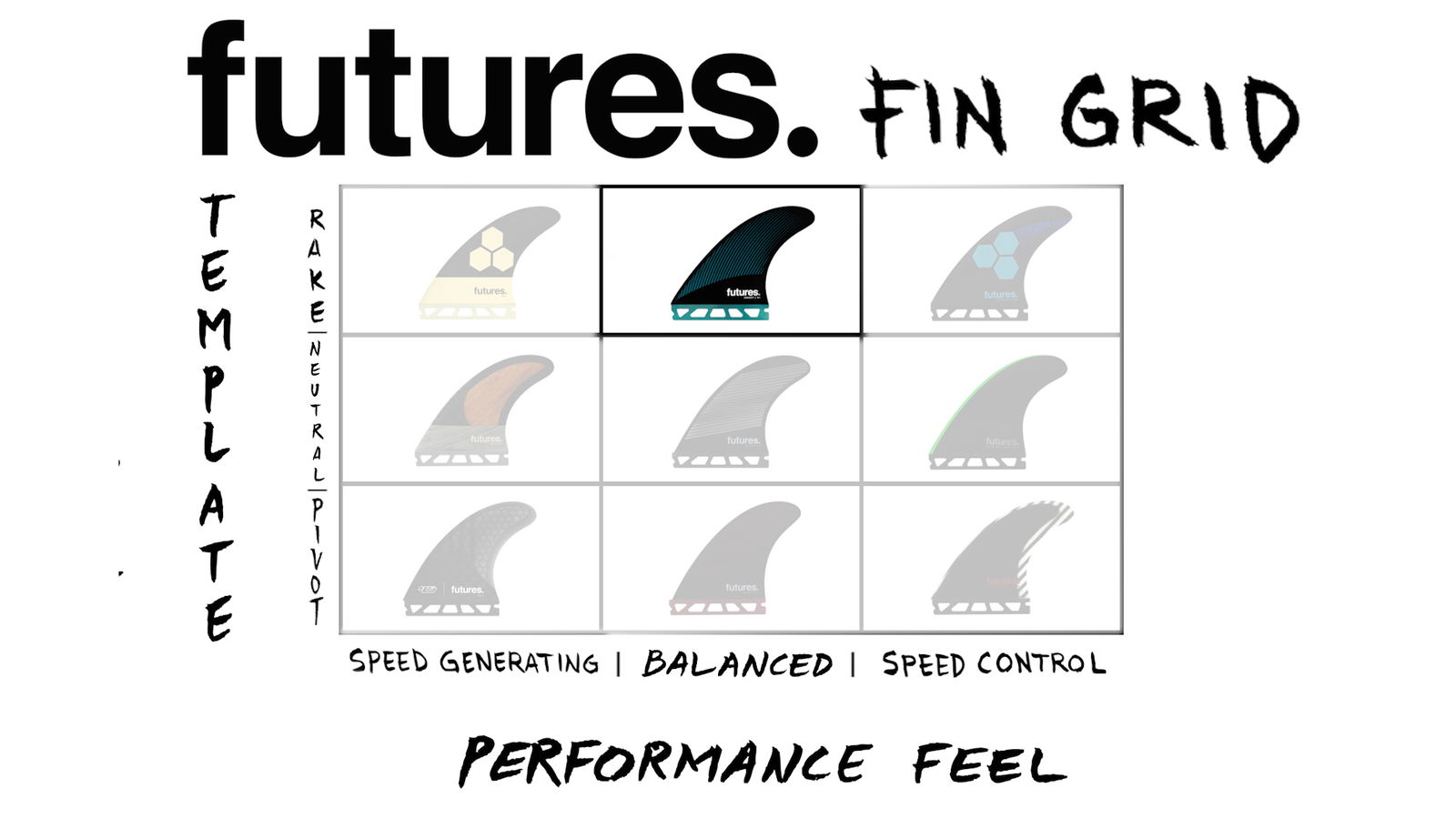
The R6 (most rake) was my preferred fin in the RAD Ripper, mainly for its ability to hold off the top.
The P6 (‘P’ standing for pivot) Legacy, which I used in my first session, has the least amount of rake, which means it stands upright and is designed for more quick-transition maneuvers rather than drawn-out carves. As a result, I was able to turn my RAD Ripper tight in the pocket, with the downside that it slid out on-rail.
Next in the Legacy line is the F6, which has a mid-level rake, meaning it’s balanced between carving and pivot-based turns. I chose to skip over this version and go straight for the most raked iteration
The R6 (‘R’ standing for rake) was just the fin I needed. As previously explained, my surfing is quite round in nature, so in order to maximize my potential I wanted to use a fin that promoted arcing maneuvers. After just a few waves on the R6 fins, I knew I’d found the right pair for me. They held off the top and allowed for sweeping, continual carves without fear of sliding out.
After scarfing down a colossal acai bowl, I was straight into session number two at a spot you might recognize from any Kolohe Andino edit.
Funnily enough, Kolohe was out surfing when I arrived at the pier, alongside his pals Luke Davis and Jeremy Carter, with papa Dino on the shore watching Brother intently. This was just weeks before the Snapper event, which, if you remember, Kolohe nearly (and still arguably) won, so these chest-high peaks ended up being great training for the Dbah event.
Brother saw the old-school Mayhem logo on my board and asked what I was riding.
“One of those new RAD Rippers,” I told him. “Have you tried?”
“Yeah, so fun, huh?” Kolohe responded. “Super easy to whip around… tons of pop too.”
Kolohe was right about the whip thing – the RAD Ripper moved like a skateboard and was easily manipulated, making it a great option for the day’s peaky conditions. However I’d yet to encounter a legitimate ramp, so I had to take Kolohe’s word about the ‘pop’ thing.
With a fresh set of fins and a newfound incentive to perform (who doesn’t want to surf well in front of the pros?), I started really pushing the RAD Ripper, attempting turns I typically can’t pull off (see the stiff-legged larry at 1:36) and hitting sections I’d normally shy away from (2:11). At one point I blindly hucked myself off an oncoming section, grabbed my rail, poo-ed my stance, and braced for an inevitable crash in the foam. Somehow I rode away (2:25).
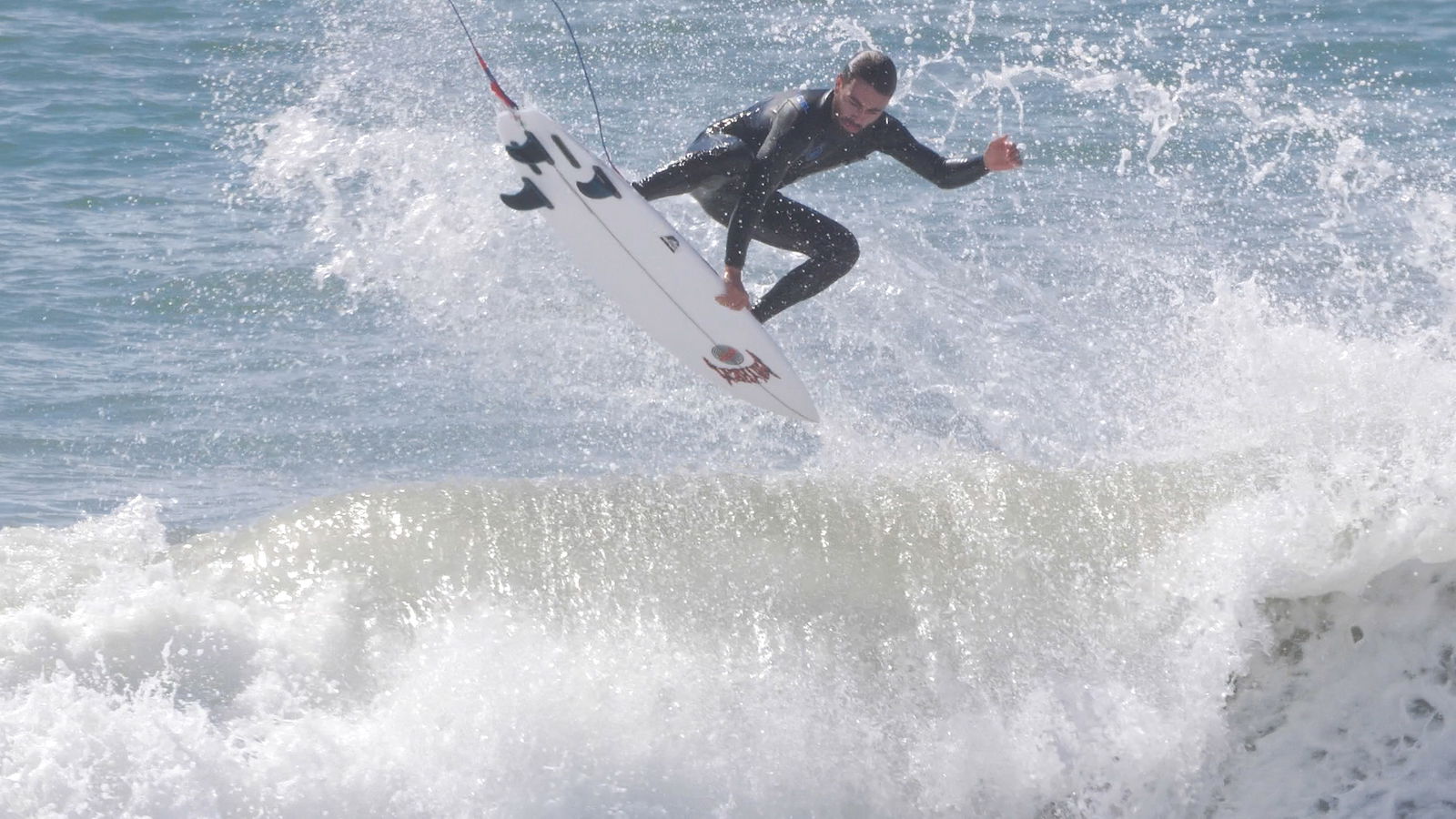
Pop confirmed.
Everything was clicking and it filled me with glee. The RAD Ripper seemed to thrive in these 2-3 foot, semi-clean, short period conditions, and the R6 Legacy fins allowed for significantly more control through my maneuvers. Some kook on a SUP nearly lopped my head off and it hardly bothered. That’s the kinda session it was.
After six long hours of surfing on the brand new board, I was well and truly cooked – but not as cooked as the RAD Ripper.
Despite being just two days old – or, on second thought, probably because of that fact – my new Mayhem was holier than swiss cheese and held more craters than the moon. This was devastating (in a first-world sense), but what’s done was done. Boards are meant to be ridden to their death, it just sucks when it happens so soon.
The moral of the story is, just because you can force a shaper to build a board in two days, doesn’t mean you should. In fact I’d suggest against it.
But if you want your own …Lost RAD Ripper (not to be finished in two days), you can get it here.

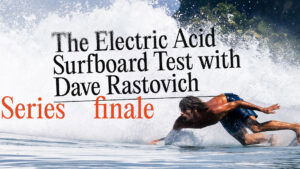












Comments
Comments are a Stab Premium feature. Gotta join to talk shop.
Already a member? Sign In
Want to join? Sign Up